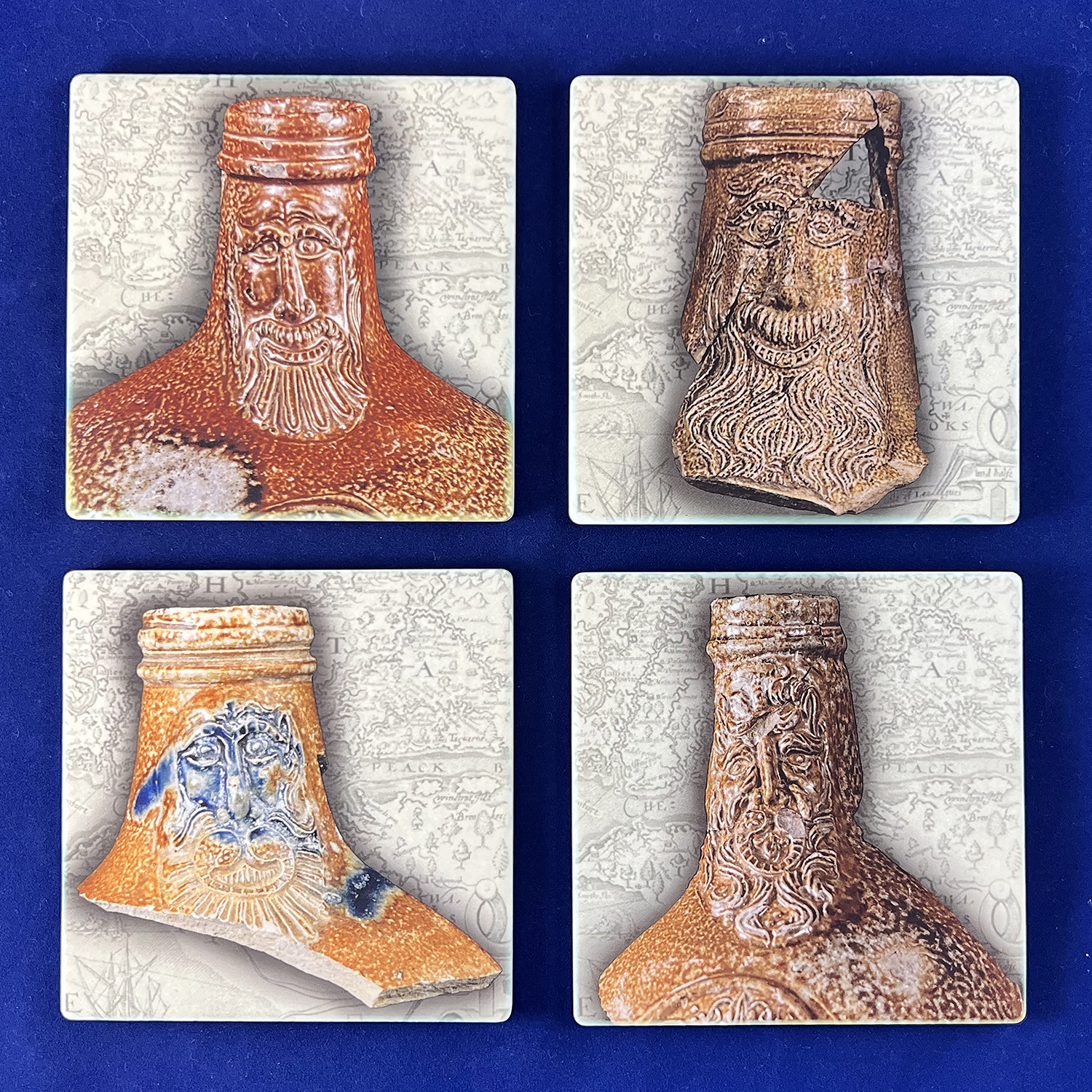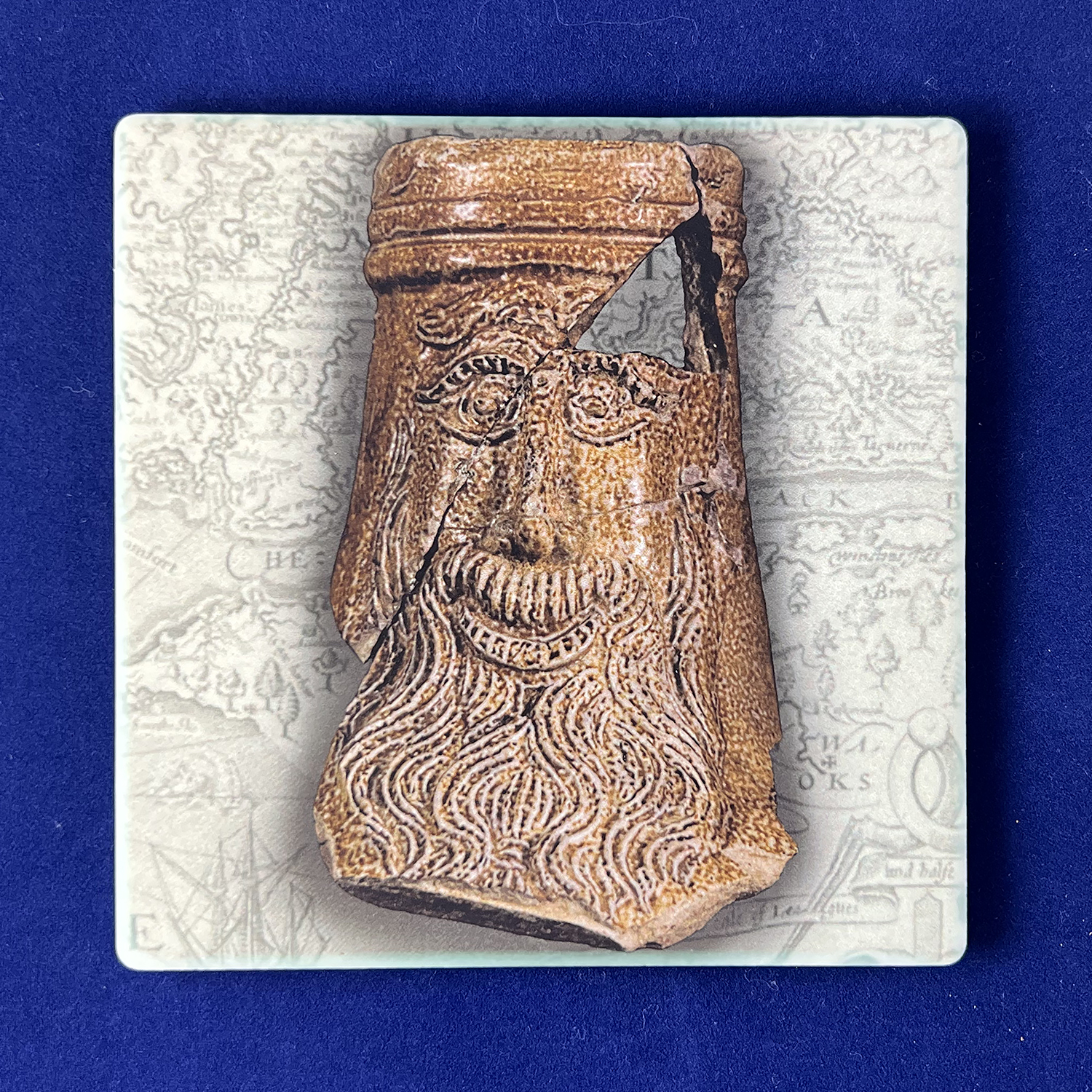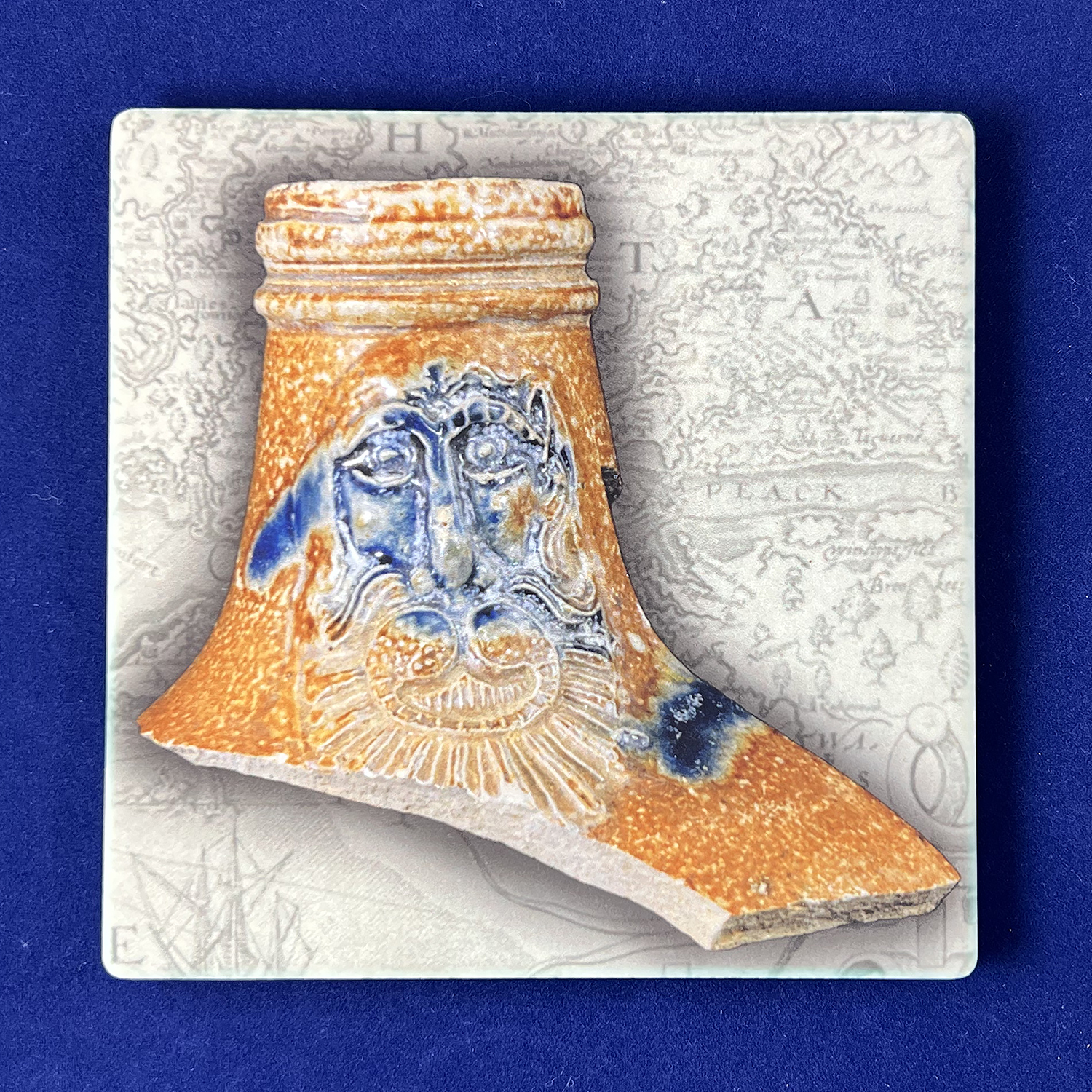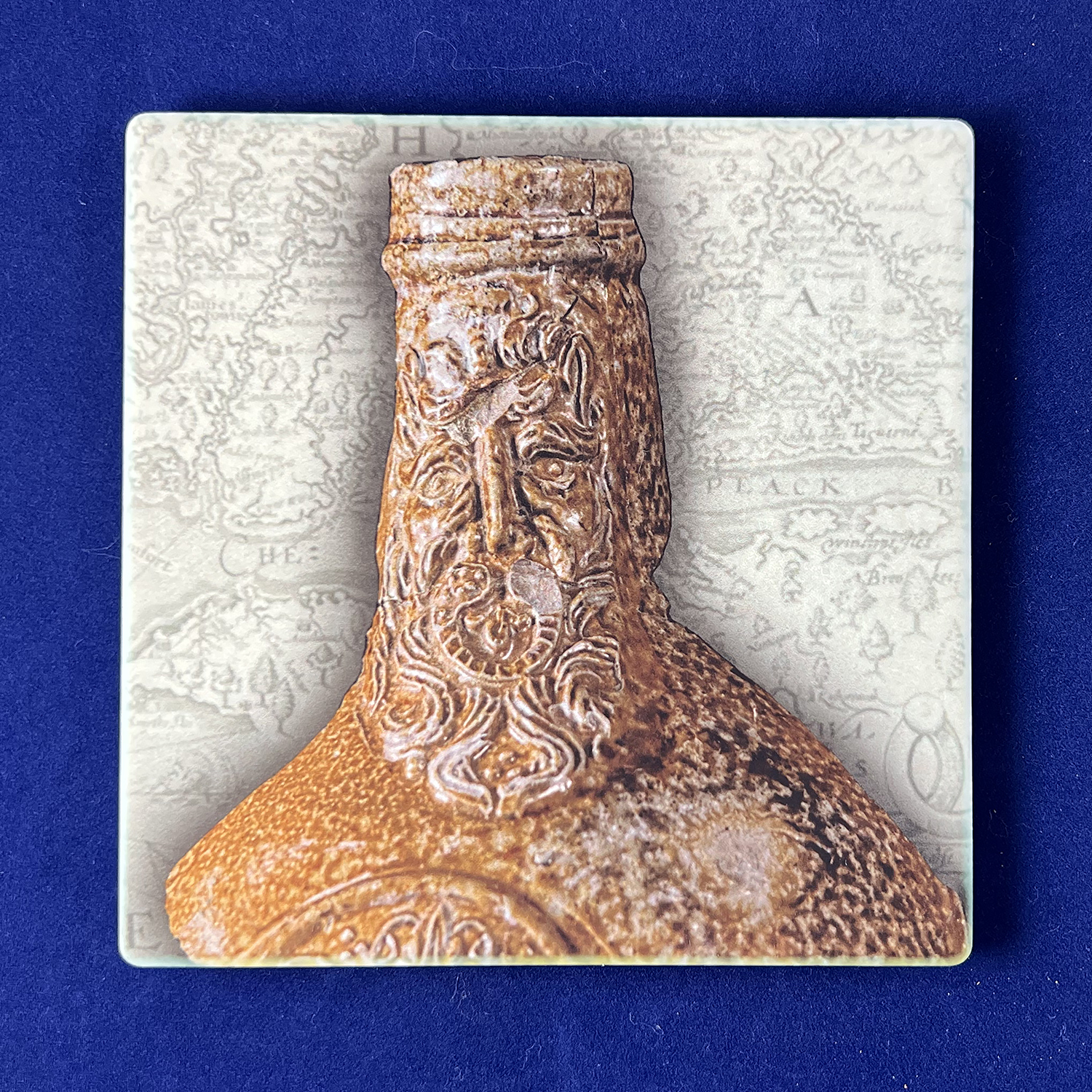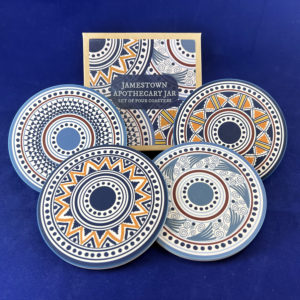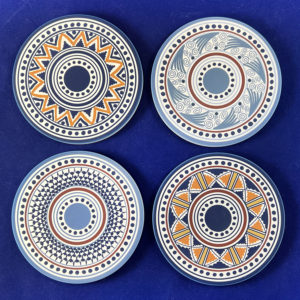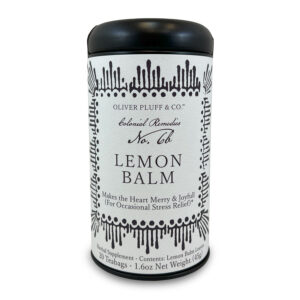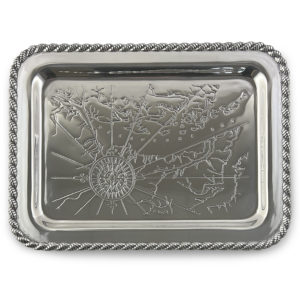Description
The sturdy salt-glazed ceramics featured on these coasters get their name from the German word meaning ‘bearded man’, referring to the bearded face on the neck of the jug. The first Bartmänner were produced around 1550 in Frechen, Germany, and exported in great numbers to fill England’s stoneware needs during the 16th and 17th centuries.
Piece of the jugs appear in many contexts across James Fort, and a select few have been recovered mostly intact. Bartmann jugs were primarily used for holding and decanting beer and wine.
Another distinguishing feature of Bartmanns are oval medallions decorating the belly of the jug. Such medallions are often armorial, reflecting the coats-of-arms of affluent patrons, European cities and royal houses, or even the potter’s own hausemarke or symbol.
Material: Sandstone with cork backer
Dimensions: 4″ x 4″
Artifactual Inspiration
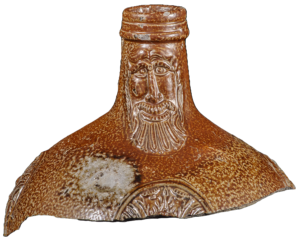
Left: A smiling man ornaments this Bartmann jug from James Fort’s first well, Structure 185. The jug was made in Germany, purchased in England, and broken and discarded at Jamestown in 1610.
Brown salt-glazed stoneware.
Frechen, Germany. 08566-JR
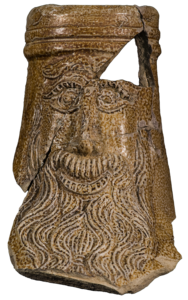
Right: The neck of this large jug, used for serving wine or beer, is decorated with the sprig-molded face of a smiling bearded man. It was recovered from James Fort’s overburden, which was used to construct Fort Pocahontas in 1861.
Brown salt-glazed stoneware.
Frechen, Germany. 08623-JR
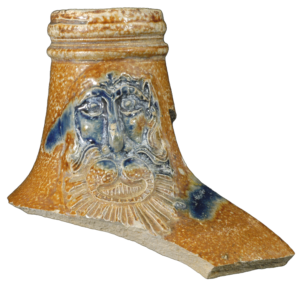
Left: This Bartmann jug face with a cobalt splash resembles a man and a lion combination. Although sherds of this bottle were recovered from diverse undateable contexts, the mask is similar to one on a William Emens jug dated 1607 found on the Sea Venture shipwreck (1609).
Brown salt-glazed stoneware.
Frechen, Germany. 00013-JR
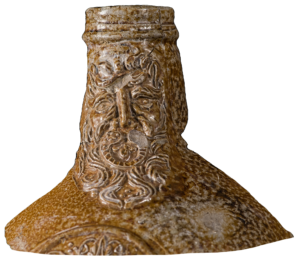
Right: One of many Bartmann jugs found in James Fort’s first well, Structure 185. The jug featuring this curly-haired face was discarded during the fort cleansing ordered by Thomas West, Lord De La Warr, in June 1610.
Brown salt-glazed stoneware.
Frechen, Germany. 07836-JR


